Mad Hedge Bitcoin Letter
September 14, 2021
Fiat Lux
Featured Trade:
(CRYPTO IS LEGIT)
(HOOD), (BTC), (FINRA), (SEC), (CFTC)

Mad Hedge Bitcoin Letter
September 14, 2021
Fiat Lux
Featured Trade:
(CRYPTO IS LEGIT)
(HOOD), (BTC), (FINRA), (SEC), (CFTC)

There is a conscious witch hunt by SEC chair Gary Gensler to point out to the Senate committee that many crypto exchanges could be operating as securities exchanges.
This is a ploy to secure the crypto exchanges and put them under his control.
I would go as far as saying that the very existence of crypto exchanges and him not regulating them makes Gensler look unimportant as they undermine his authority as the watchdog of the securities industry.
One might just brush it off as crypto isn’t that important, but these developments validate the crypto industry as something becoming too valuable to allow operation without the stamp of the SEC.
Don’t blame me for being cynical but boiling this down to money also cuts through many adjacent industries.
It’s just the way of life.
Crypto is becoming lucrative and Gensler doesn’t want to miss out on this golden goose.
Why do I say that?
The SEC basically earns money on any movement on regulated exchanges from buying and selling and everything in between.
Investing with Robinhood is commission-free, now and forever. They don’t charge you fees to open your account, maintain your account, or transfer funds to your account.
However, self-regulatory organizations (SROs) such as the Financial Industry Regulatory Authority (FINRA) charge them a small fee for sell orders.
They charge these fees for all sell orders, regardless of the brokerage. Robinhood passes these fees to customers and remits them to the applicable SROs.
FINRA is required to pay this fee to the Securities and Exchange Commission (SEC) by law. To generate the funds necessary to do so, FINRA passes the fee on to its members, and many of these members, including Robinhood, pass the fee on to customers.
The fee is ultimately intended to cover the costs incurred by the government, including the SEC, for supervising and regulating the securities markets and securities professionals.
The SEC fee is $5.10 per $1,000,000 of principal (sells only) and is rounded up to the nearest penny.
FINRA charges this fee to brokerage firms to recover the costs of supervising and regulating these firms and this fee is rounded up to the nearest penny and no greater than $5.95.
American Depositary Receipts (ADRs) are certificates that represent foreign stocks and can trade on American exchanges. The banks issuing these certificates may charge custodial fees that typically range from $0.01-$0.03 per share.
There are numerous fees involved in participating on official exchanges that are regulated by the SEC.
For Gensler giving his stamp of legitimacy to the crypto exchanges, in turn, he wants fees, plain and simple.
For lack of a better word, these fees allow regulators like FINRA and the SEC to rake in the cash and as we know in this business, money is power.
I only see it as a matter of time before SEC, FINRA, and Commodity Futures Trading Commission (CFTC) add crypto exchanges to its umbrella of fee collecting businesses they oversee.
And I am not blaming them, everyone is in the business of adding to their nest eggs, and SEC, FINRA, and CFTC are no different.
However, ultimately, this is what it’s about, a cash grab and just the knock-on effect of legitimizing crypto is something any asset class would love to boast about.
Just take sports for an example, football leagues are scrambling to become that minor league to the NFL, but the NFL isn’t interested in offering that stamp of approval.
They don’t care if college football and XFL battle it out away from the confines of professional football, and the costs of not having an NFL stamp of approval have been extortionate forcing start-up leagues to collapse.
If the SEC vouches and incorporates large elements of crypto infrastructure under the umbrella in which they oversee, this will start a chain reaction offering an olive branch to many wealthy investors that are on the fence about this whole crypto thing.
Consequently, they would come pouring in guns blazing with that green light with the heft of their capital and the strength of their financial connections.
Gensler announcing that cryptocurrency exchanges may need to register as securities exchanges makes this one step closer to reality.
Gensler stated that the current crypto industry is not operating within regulatory frameworks that protect investors and consumers from illicit activities and he only cares because it’s the SEC and FINRA that aren’t doing the protecting.
I want to remind readers that Gensler has the choice to allow crypto to flourish in a vacuum but then it could get too big to regulate and nickel and dime and he knows that.
He highlighted crypto as an “asset class is rife with fraud, scams, and abuse in certain applications.”
Gensler has no moral high ground on this topic.
The SEC is an organization that allows rampant fraud from Chinese companies listed as ADRs without even a care for protecting US investors.
They harbor these companies in an environment where they do not need to follow American GAAP accounting rules and are not subject to prosecution because employees are on Chinese soil which has no extradition agreement with the US.
Gensler also admitted that the SEC does not have the jurisdiction to regulate cryptocurrencies, he urged Congress to regulate digital asset exchanges.
It sounds like he is more nervous than anyone involved.
Regulation would be a huge win for the crypto universe, but this would infringe on the decentralized concept of the asset class.
Gensler and the establishment like to preach about how unsafe crypto is, but he is part of a system that destroys the value of fiat currency with insane amount of quantitative easing and unchecked inflation.
Thus, does Gensler believe destroying the value of the dollar is something that can be called safe?
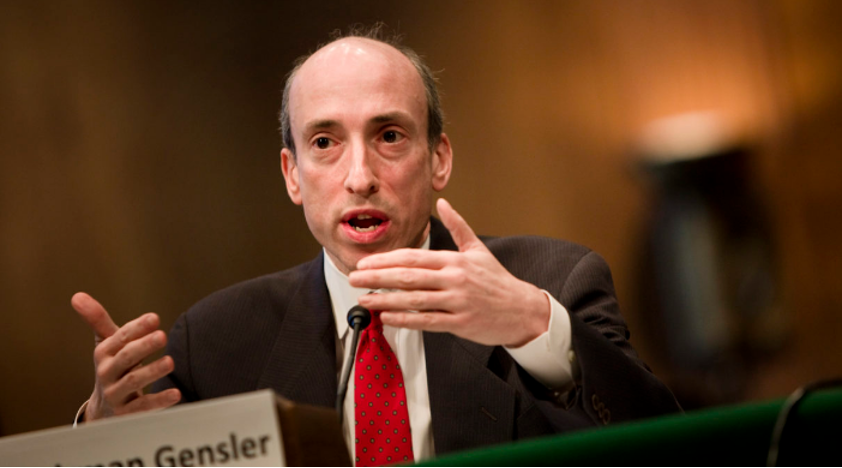
GENSLER WANTS A TALK WITH THE CRYPTO EXCHANGES
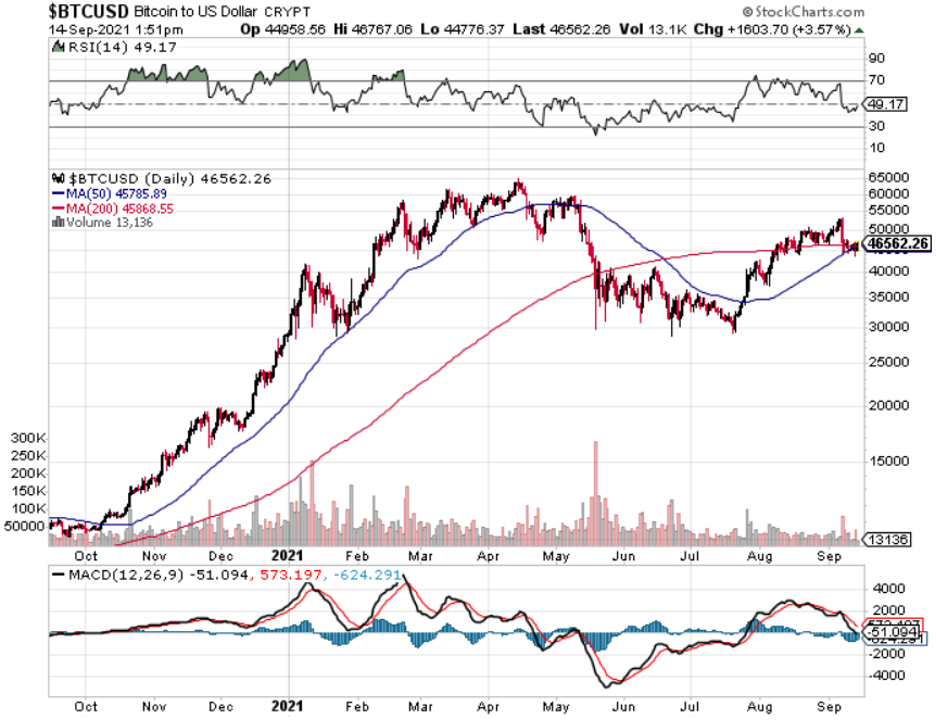
Global Market Comments
August 27, 2021
Fiat Lux
Featured Trade:
(AUGUST 25 BIWEEKLY STRATEGY WEBINAR Q&A),
(ROM), (EEM), (FXI), (DIS), (AMZN), (NFLX), (CHPT), (TLT), (TBT), (AAPL),
(GOOG), (WPM), (GOLD), (NEM), (GDX), (X), (SLV), (FCX), (BA), (HOOD), (USO)
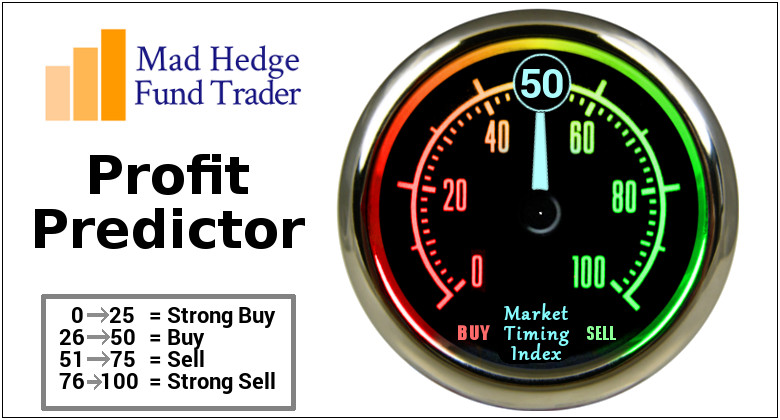
Below please find subscribers’ Q&A for the August 25 Mad Hedge Fund Trader Global Strategy Webinar broadcast from The Atlantis Casino Hotel in Reno, NV.
Q: How does a 2X ProShares Ultra Technology ETF (ROM) February 2022 vertical bull call spread on the ROM look? Would you do $110-$115 or $115-$120?
A: I would do nothing here at $112.50 because we’ve just gone up 10 points in a week. I’d wait for some kind of pullback, even just $5 or $10 points, and then I would do the $110-$115. I’m leaning towards more conservative LEAPS these days—bets that the market goes sideways to up small rather than going ballistic, which it has done for the last 18 months. Think at-the-money strikes, not deep out-of-the-money on your LEAPS from here on for the rest of this economic cycle. The potential profits are still enormous. The only problem with (ROM) is that the longest maturities on the options are only six months.
Q: How do you recommend entering your long-term portfolio?
A: I would use the one-third rule: you put on ⅓ now, ⅓ higher or lower later on, and ⅓ higher or lower again. That way you get a good average price. Long term, everything goes up until we hit the next recession, which is probably several years off.
Q: I keep reading that the Delta variant is a market risk, but I don’t think that investors will look through this. Is Delta already priced into the shares?
A: Yes, what is not priced into the shares is the end of Delta, the end of the pandemic—and that will lead to my “everything” rally that I’ve been talking about for a month now. And we have already seen the beginning of that, especially with the price action this week. So yes, Delta in: dead market; Delta out: roaring market.
Q: Do you think there will eventually be a rotation into emerging markets (EEM), or has the virus battered these markets too much to even consider it?
A: Sometime in our future—not yet—the emerging markets will be our core holding. And the trigger for that will be the collapse of the dollar, which is hitting an interim high right now. When the greenback rolls over and dies, you can expect emerging markets, especially China, to take off like a rocket. That’s going to be our next big trade. I don't know if it will be this year or next year but it’s coming, so start doing your emerging market research now, and keep reading my newsletter.
Q: Is the coming tax hike a problem for the stock market?
A: No, I don’t think so. First off, I don’t think they’re going to do a tax bill this year; they don’t want anything to interfere with the 2022 election, so it may be next year’s business. Also, any new taxes are going to be overwhelmingly focused on billionaires, carried interest, offshoring, and large corporations. The middle class, people who make less than $400,000 a year, will not see any tax hike at all, possibly even getting some tax cuts via restored SALT deductions. So, I don't really see it affecting the stock market at all.
Q: What do you think about Chinese stocks (FXI)?
A: Long-term they’re okay, short term possibly more downside. Interestingly, the bigger risk may not be China itself and how the government is beating up its own tech companies, but the SEC. It has indicated they don’t really like these offshore vehicles that have been listed on the New York Stock Exchange, and they may move to ban them. I’m not rushing into China right now, only because there are just so many better opportunities in the US stock market for the time being. I may go back in the future—it’s a case where I’d rather buy them on the way up than trying to catch a falling knife on China right now.
Q: Do you expect any market impact from the Jackson Hole meeting?
A: Yes, whatever J Powell says, even if he says nothing, will have a market impact. And it will have a bigger impact on the bond market than it will on the stock market, which is down a full point this morning. So yes, but not yet. I imagine we’ll hear something very soon.
Q: September and October tend to be volatile; do you see us having a 5% or 10% pullback in those months?
A: I don’t see any more than 5%, with the hyper liquidity that we have in the system now. There just aren’t any events out there that could trigger a pullback of 10%—no geopolitical events, and the economy will be getting stronger, not worse. So yes, an “everything rally” doesn’t give you many long side entry points, so I just don’t see 10% happening.
Q: What about a Walt Disney (DIS) January 2022 $180-$220 LEAPS?
A: I would do the $180-$200. I think you can afford to be tighter on your spread there, take some more risk because I think it’s just going to go nuts to the upside once we get a drop in COVID cases. By the way, Disney parks are only operating at 70% capacity, so if you go back up to 100% that's a near 50% increase in profits for the company. And it’s not just Disney, but Netflix (NFLX), Amazon (AMZN), and everybody else that’s about to have the greatest number of blockbuster movies released of all time. They’re holding back their big-ticket movies for the end of the pandemic when people can go back into theaters. We’ll start seeing those movies come out in the last quarter of this year, and I’m particularly looking forward to the next James Bond movie, a man after my own heart.
Q: Are EV car charging companies like ChargePoint Holdings (CHPT) going to do as well as the car companies?
A: No. They’re low margin business, so it’s not a business model for me. I like high-profit margins, huge barriers to entry, and very wide moats, which pretty much characterizes everything I own. The big profits in EVs are going to be in the cars themselves. Charging the cars is a very capital-intensive, highly regulated, and low-margin business.
Q: Would a Fed taper cause a 10% pullback?
A: Absolutely not; in fact, I think a taper would make the market go up because Jay Powell has been talking it into the market all year. And that’s his goal, is to minimize the impact of a taper so when they finally do it, they say ho-hum and “okay you can take that risk out of the market.” That’s the way these things work.
Q: What is your yearend target for United States Treasury Bond Fund (TLT)?
A: $132. Call it bold, but I'm all about bold. I think the first stop will be at $144, then $138, then bombs away!
Q: What will it take for (TLT) to dip below $130?
A: Another year of hot economic growth, which Congress seems hell-bent on delivering us.
Q: What are your ProShares Ultra Short 20+ Year Treasury ETF (TBT) targets?
A: When we were at 1.76% on the 10-year bond, the (TBT) made it all the way back to 22 ½. Next year we go higher, probably to $25, maybe even $30.
Q: What’s your 10-year view on the (TBT)?
A: $200. That’s when you get interest rates back to 10% in 10 years on the 10-year bond. So yes, that’s a great long-term play.
Q: How long can we hold (TBT)?
A: As long as you want. Ten years would be a good time frame if you want to catch that $17 to $200 move. The (TBT) is an ETF, not an option, therefore it doesn’t expire.
Q: Are you working on an electrification stock list?
A: I am not, because it’s such a fragmented sector. It’s tough to really nail down specific stocks. I think it’s safe to say that the electric power grid is going to change beyond all recognition, but they won’t necessarily be in high margin companies, and I tend to prefer high-profit-margin, large-moat companies which nobody else can get into, like Apple (AAPL) or Google (GOOG).
Q: What about gas pipelines with high yields?
A: They have a high yield for a reason; because they’re very high risk. If you're going to a carbon-free economy, you don’t necessarily want to own pipelines whose main job is moving carbon; it’s another buggy whip-type industry I would avoid. I’ve seen people get wiped out by these things more times than I could count. If you remember Master Limited Partnerships, quite a few of them went bankrupt last year with the oil crash, so I would avoid that area. These tend to be very highly leveraged and poorly managed instruments.
Q: Best play on silver (SLV)?
A: Wheaton Precious Metals (WPM) is the highest leveraged silver play out there, and a great LEAPS candidate. Go out 2 years and triple your money.
Q: Geopolitical oil (USO) risks?
A: No, nobody cares about oil anymore—that’s why we’re giving up on Afghanistan. China is buying 80% of the Persian Gulf oil right now. We don’t really need it at all, so why have our military over there to protect China’s oil supply?
Q: What about Freeport McMoRan (FCX)?
A: I absolutely love it. Any big economic recovery can’t happen without copper, and you have a huge tailwind there from electric cars which need 200 pounds of copper each, as opposed to 20 pounds in conventional cars.
Q: I see AMC Entertainment Holdings (AMC) is up 20% today; should everyone be chasing this stock?
A: No, absolutely not. (AMC) and all the meme stocks aren’t investments, they’re gambling, and there are better ways to gamble.
Q: Should I buy the lumber dip?
A: Yes. I think the slowdown on housing is temporary because it will take 10 years for supply and demand in the housing market to come back into balance because of all the millennials entering the housing market for the first time. So, that would be a yes on lumber and all the other commodities out there that go into housing like copper, steel, and aluminum.
Q: Should I put money into Canadian Junior Gold Miners (GDX)?
A: No, I would rather go out and take a long nap first. These are just so high risk, and they often go bankrupt. The liquidity is terrible, and the dealing spreads are wide. I would stick with the bigger precious metal plays like Newmont Mining (NEM), Barrick Gold (GOLD), and Wheaton Precious Metals (WPM).
Q: Is Boeing (BA) a buy here?
A: Yes, we’re back at the bottom end of the trading range for the stock. It’s just a matter of time before they get things right, and the 737 Max orders are rolling in like crazy now that there’s an airplane shortage.
Q: What do you think about Robinhood (HOOD)?
A: I like it quite a lot; I got flushed out of my long position on Friday with a 10% down move. Of course, 90% of my stop losses end up expiring at their maximum profit points, but I have to do it to keep the volatility of the portfolio down. So yes, I’ll try to buy it again on the next dip. The trouble is it’s kind of a quasi-meme stock in its own right, hence the volatility; so I would say on the next 10% down day, you go into Robinhood, and I probably will too.
Q: How are the wildfires around Tahoe?
A: They’re terrible and there are three of them. I did a hike two days ago there, and out of a parking lot with 100 spaces, I was the only one there. It’s the only time I’d ever seen Tahoe deserted in August. With visibility of 500 yards, it's just terrible. Fortunately, I was able to hike without coughing my guts out—it’s not so thick that you can’t breathe.
Q: What do you think of US Steel (X)?
A: I like it, I think the whole industrial commodity complex rallies like crazy going into the end of the year.
Q: As a new member, where is the best place to start? It’s just kind of like drinking from a fire hose.
A: Wait for the trade alerts; they only happen at sweet spots and you may have to wait a few days or weeks to get one since we only like to enter them at good points. That’s the best place to enter new positions for the first time. In the meantime, keep reading all the research, because when these trade alerts do come out, they’re not surprises because I’m pumping out research on them every day, across multiple fronts. Be patient— we are running a 93% success rate, but only because we take our time on entering good trades. The services that guarantee a trade alert every day lose money hand over fist.
Q: If they do delist Chinese stocks, will US investors be left holding the bag?
A: Yes, and that will be the only reason they don’t delist them, that they don’t want to wipe out all current US investors.
To watch a replay of this webinar with all the charts, bells, whistles, and classic rock music, just log in to www.madhedgefundtrader.com, go to MY ACCOUNT, click on GLOBAL TRADING DISPATCH or TECHNOLOGY LETTER (whichever applies to you), then select WEBINARS and all the webinars from the last ten years are there in all their glory.
Good Luck and Stay Healthy.
John Thomas
CEO & Publisher
The Diary of a Mad Hedge Fund Trader

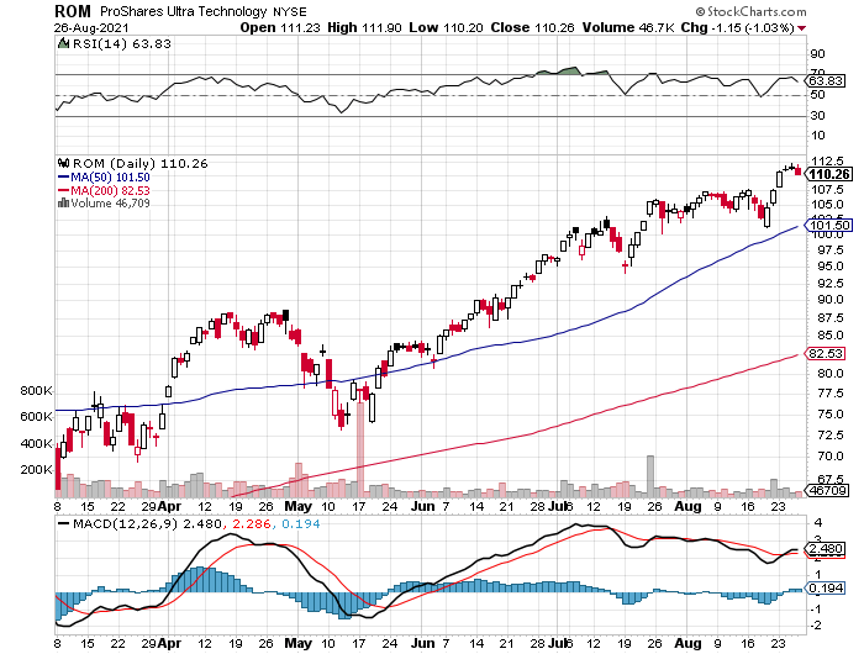
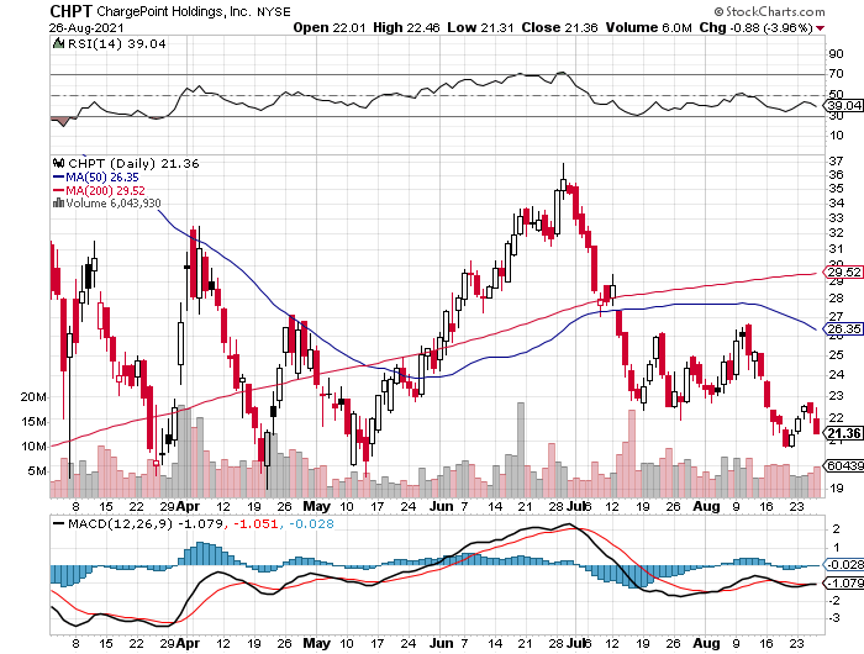
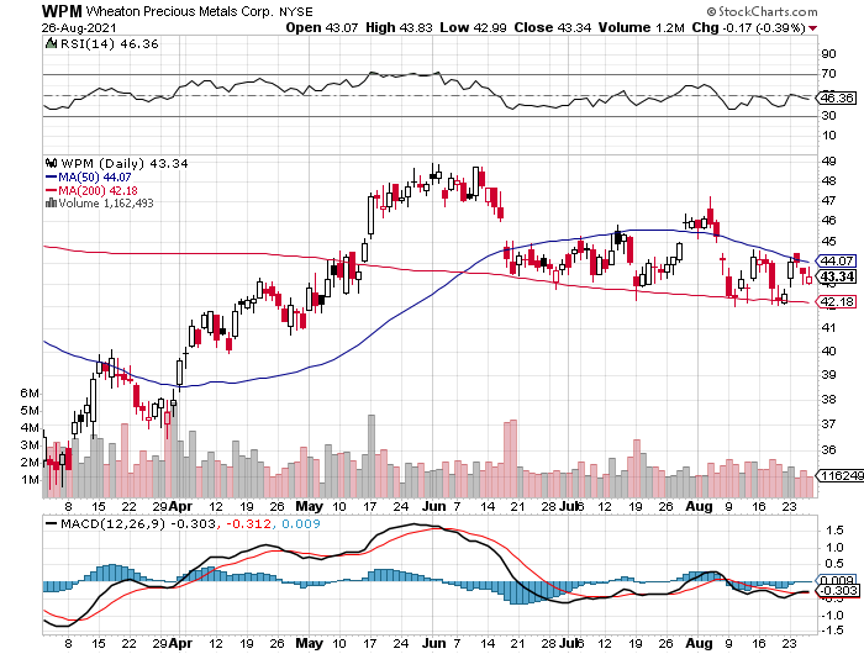
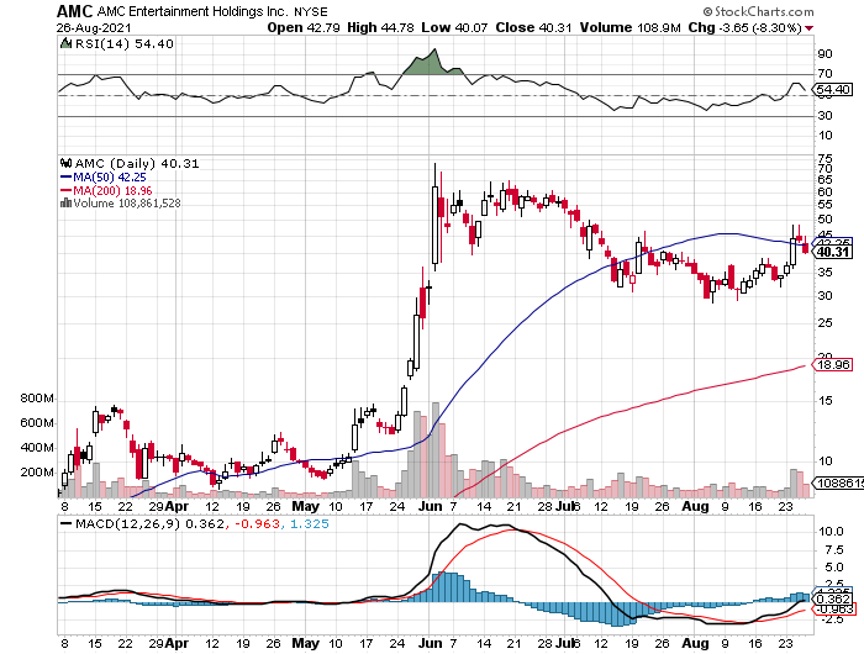
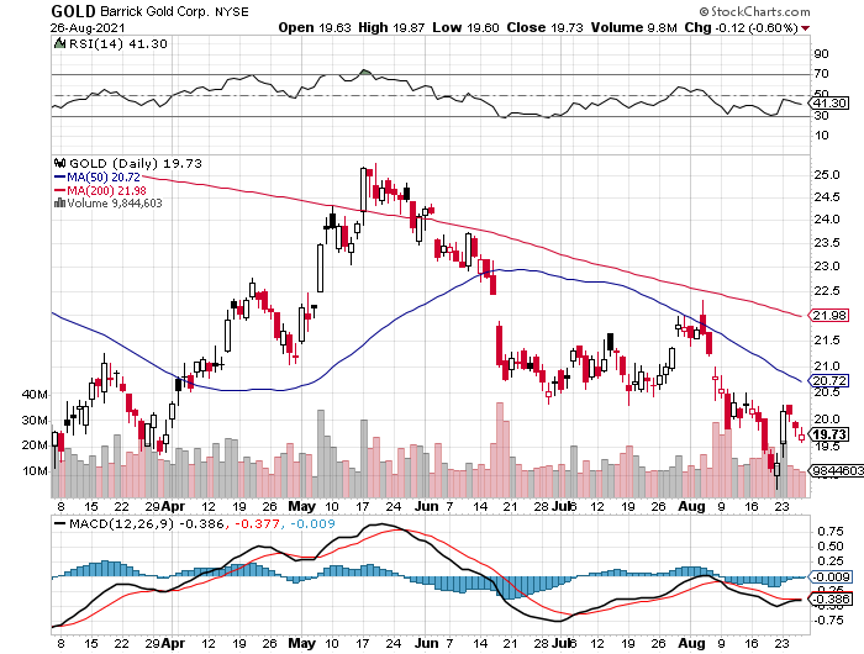
Global Market Comments
August 16, 2021
Fiat Lux9
(MARKET OUTLOOK FOR THE WEEK AHEAD, or MY REVOLUTIONARY NEW STRATEGY,
(SPY), (TLT), (NVDA), (ROKU), (HOOD), (GS), (JPM)
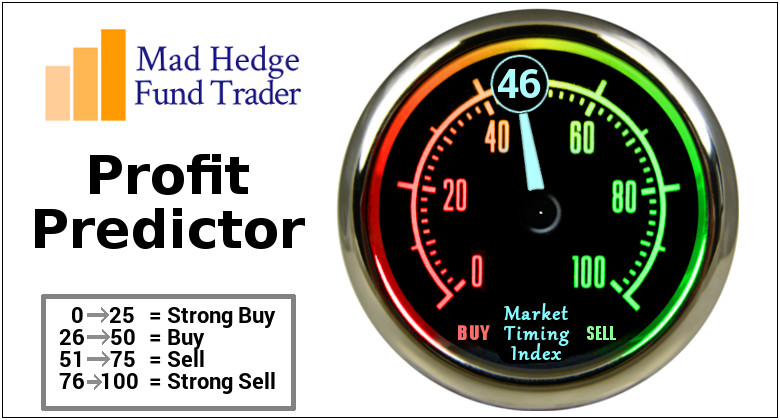
Friday saw the stock market’s lowest volume day of the year, and shares rose almost every day last week to new all-time highs.
The way this usually ends is that the slow grind explodes into a high-volume spike marking an interim market top. That makes new investment now extremely risky.
August usually markets the best buying opportunity of the year with a cataclysmic selloff. Remember the 2010 flash crash, down 1,100 points in two hours? So far, no cigar.
I have tons of people asking me what to buy right now. That is usually another market-topping indicator. I tell them to keep their cash. Cash is a position. A dollar at a market top is worth $10 at a market bottom.
Under an index that is making excruciatingly slow gains are constant sector rotations bring pretty dramatic moves. Play those dramatic moves.
May saw money suddenly shift into tech stocks, with the best, like NVIDIA (NVDA) leaping 56%.
The day the ten-year US Treasury yield (TLT) bottomed at 1.10%, tech went back to sleep. While big tech ground sideways, small tech brought more heart-rending downside moves, such as the 27% plunge in Roku (ROKU).
In the meantime, financials and commodities have moved to the fore. Goldman Sachs (GS) melted up 20% off of blockbuster earnings, while Freeport McMoRan popped 26%, thanks to a Chilean copper union strike.
Let me propose a revolutionary new investment strategy to you. It’s called “buy low, sell high.” Everybody talks about it but actually executes the opposite.
I employ this money-making ploy through my “barbell” strategy, with equal weightings in technology and domestic recovery stocks like financials, industrials, and commodities.
It's quite simple. You just sell whatever has just delivered the most recent spectacular upside gains and roll that money into what has recently become ignored, cheap, and out of favor.
It is a market approach that is really devoid of the thought process.
All eyes will be on Jackson Hole, Wyoming next week, the annual meeting of the world’s top central bankers. That is when we get the next hint about the intentions of the Federal Reserve as to, not "if", but "when" they reduce quantitative easing.
You would think that a 6.5% GDP growth rate and a 5.4% inflation rate would do it, but these days, nothing is certain. A hot jobs report in September would do it for sure.
We may have to wait until then before we see any serious move in stocks and a return of volatility (VIX). In the meantime, catch up on reading your research, pay your bills, and work on your golf swing.
Bitcoin staged a recovery for the ages, rallying 55% in two weeks. The “battle of $30,000” is over and the cryptocurrency won. It really is becoming too big to fail. I might have to do something about that.
July Inflation Read at a hot 5.4%, but core inflation showed a small decline. In June, used car prices accounted for a third of the total price increases, but last month, it was zero. So far, there is no move in rents, but it’s coming. All Fed eyes will remain laser-focused on this number.
Taper talk is back! With the ballistic increase in the July Nonfarm Payroll report and the 2 ½ point dive in the bond market. I think the top is in for finds and the bottom for long term rates. It means tech stocks will lag from now, while interest rate sensitives like banks, brokers, and fund managers will lead. Buy (JPM), (MS), (V), and (GS) on dips.
US Budget Deficit hits a record $302 Billion in July. Covid benefits are remaining high, while tax revenues are lagging YOY. Keep selling those (TLT) rallies. The generational crash may have just begun.
Fed’s Rosengren Says QE is not creating jobs, causing bonds to drop a full point in the after-market. No kidding. I have been arguing that our nation’s central bank has been pushing on a string all year. Atlanta Fed governor Bostic couldn’t agree more. Time for more action than words?
Gold Hits four-month low, breaking key support. Bitcoin is clearly stealing its thunder, which has risen by 50% in two weeks. If you’re considering gold, go take a long nap first.
Oil dives on delta surge, off $9, or 12% in a week, the lowest in three weeks. Delta is now rampaging throughout China, the world’s largest consumer of Texas tea., putting $63 in play.
Weekly Jobless Claims hit 375,000, down 12,000 on the week. Moving in the right direction but still incredibly high.
Berkshire Hathaway announces solid earnings, but scales back share buybacks at these elevated levels. Oracle of Omaha Warren Buffett bought back $6 billion of his own stock in Q2, leaving him with a staggering $144 billion in cash. Almost no stocks meet Buffett’s value standards in the current environment. Buy (BRKB) on dips. It’s a high-class problem to have.
Ed Yardeni is bullish, along with David Kostin, and is the only manager who comes close to my own $475 target for the (SPY) by the end of the year. The U.S. economy will be in nominal terms around 8% higher this year than pre-pandemic 2019. Sales for the S&P 500 companies will be 15% higher and earnings will be 34% higher. That is a representation of the operating leverage that exists in so many companies. The Roaring Twenties lives!
My Ten-Year View
When we come out the other side of pandemic, we will be perfectly poised to launch into my new American Golden Age, or the next Roaring Twenties. With interest rates still at zero, oil cheap, there will be no reason not to. The Dow Average will rise by 800% to 240,000 or more in the coming decade. The American coming out the other side of the pandemic will be far more efficient and profitable than the old. Dow 240,000 here we come!
My Mad Hedge Global Trading Dispatch saw a modest +4.86% in July. My 2021 year-to-date performance appreciated to 74.07%. The Dow Average was up 16.00% so far in 2021.
I stuck with three positions, a long in (JPM) and a double short in the (TLT), all of which expire on Friday. My double short in the (SPY) punched me in the nose, forcing me to stop out for losses when I hit the lowest strike prices.
I then jumped into a very deep in-the-money call spread in Robinhood (HOOD) made possible only by the stock’s astronomically high volatility. Its 44% drop helped too. I also added a third short in the bond market.
That leaves me 30% in cash. I’m keeping positions small as long as we are at extreme overbought conditions.
That brings my 11-year total return to 496.62%, some 2.00 times the S&P 500 (SPX) over the same period. My 12-year average annualized return now stands at an unbelievable 12.56%, easily the highest in the industry.
My trailing one-year return retreated to positively eye-popping 106.69%. I truly have to pinch myself when I see numbers like this. I bet many of you are making the biggest money of your long lives.
We need to keep an eye on the number of US Coronavirus cases at 36.7 million and rising quickly and deaths topping 622,000, which you can find here at https://coronavirus.jhu.edu.
The coming week will bring our monthly blockbuster jobs reports on the data front.
On Monday, August 16 at 7:00 AM, the New York Empire State Manufacturing Index is out.
On Tuesday, August 17 at 7:30 AM, US Retail Sales for July are published.
On Wednesday, August 18 at 5:30 AM, the Housing Starts for July are printed. At 2:00 PM, the minutes from the last FOMC are released.
On Thursday, August 19 at 8:30 AM, Weekly Jobless Claims are announced. Square (SQ) reports.
On Friday, August 20 at 2:00 PM, the Baker Hughes Oil Rig Count are disclosed.
As for me, upon graduation from high school in 1970, I received a plethora of scholarships, one of which was for the then astronomical sum of $300 in cash from the Arc Foundation.
By age 18, I had hitchhiked in every country in Europe and North Africa, more than 50. The frozen wasteland of the North and the Land of Jack London beckoned.
After all, it was only 4,000 miles away. How hard could it be? Besides, oil had just been discovered on the North Slope and there were stories of abundant high-paying jobs.
I started hitching to the Northwest, using my grandfather’s 1892 30-40 Krag & Jorgenson rifle to prop up my pack and keeping a Smith & Wesson .38 revolver in my coat pocket. Hitchhikers with firearms were common in those days and they always got rides. Drivers wanted the extra protection.
No trouble crossing the Canadian border either. I was just another hunter.
The Alcan Highway started in Dawson Creek, British Columbia, and was built by an all-black construction crew during the summer of 1942 to prevent the Japanese from invading Alaska. It had not yet been paved and was considered the great driving challenge in North America.
The rain started almost immediately. The legendary size of the mosquitoes turned out to be true. Sometimes, it took a day to catch a ride. But the scenery was magnificent and pristine.
At one point, a Grizzley bear approached me. I let loose a shot over his head at 100 yards and he just turned around and lumbered away. It was too beautiful to kill.
I passed through historic Dawson City in the Yukon, the terminus of the 1898 Gold Rush. There, abandoned steamboats lie rotting away on the banks, being reclaimed by nature. The movie theater was closed but years later was found to have hundreds of rare turn-of-the-century nitrate movie prints frozen in the basement, a true gold mine.
Eventually, I got a ride with a family returning to Anchorage hauling a big RV. I started out in the back of the truck in the rain, but when I came down with pneumonia, they were kind enough to let me move inside. Their kids sang “Raindrops keep falling on my head” the entire way, driving me nuts. In Anchorage, they allowed me to camp out in their garage.
Once in Alaska, there were no jobs. The permits required to start the big pipeline project wouldn’t be granted for four more years. There were 10,000 unemployed.
The big event that year was the opening of the first McDonald’s in Alaska. To promote the event, the company said they would drop dollar bills from a helicopter. Thousands of homesick showed up and a riot broke out, causing the stand to burn down. It was rumored their burgers were made of moose meat anyway.
I made it all the way to Fairbanks to catch my first sighting of the wispy green contrails of the northern lights, impressive indeed. Then began the long trip back.
I lucked out catching an Alaska Airlines promotional truck headed for Seattle. That got me free ferry rides through the inside passage. The driver wanted the extra protection as well. The gaudy, polished tourist destinations of today were back then pretty rough ports inhabited by tough, deeply tanned commercial fishermen and loggers who were heavy drinkers always short of money. Alcohol features large in the history of Alaska.
From Seattle, it was just a quick 24-hour hop down to LA. I still treasure this trip. The Alaska of 1970 no longer exists, as it is now overrun with summer tourists. It now has more than one McDonald’s. And with runaway global warming, the climate is starting to resemble that of California than the polar experience it once was.
Good Luck and Good Trading.
John Thomas
CEO & Publisher
The Diary of a Mad Hedge Fund Trader

The Alcan Highway Midpoint

The Alaska-Yukon Border in 1970
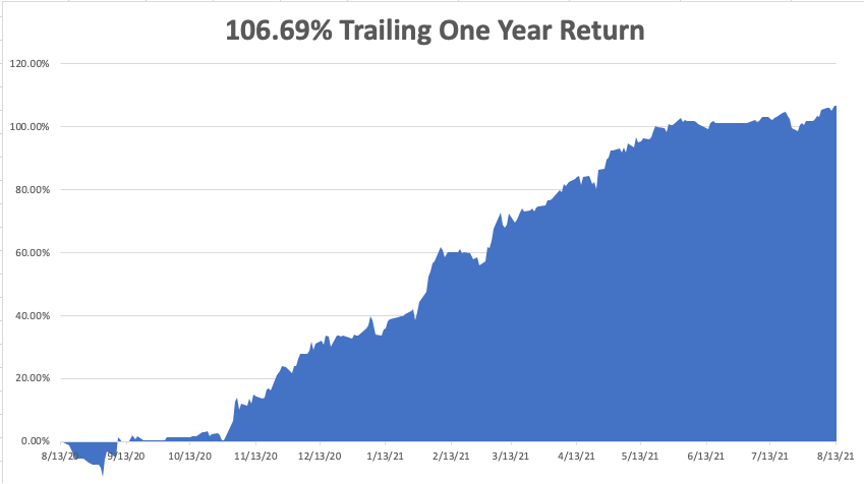
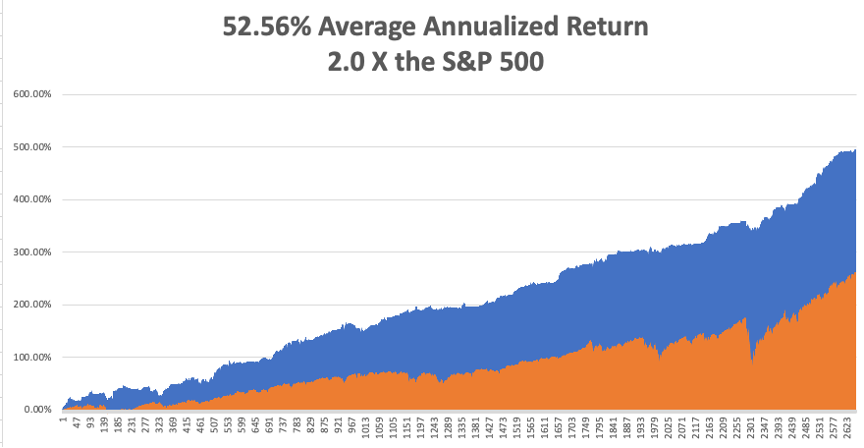
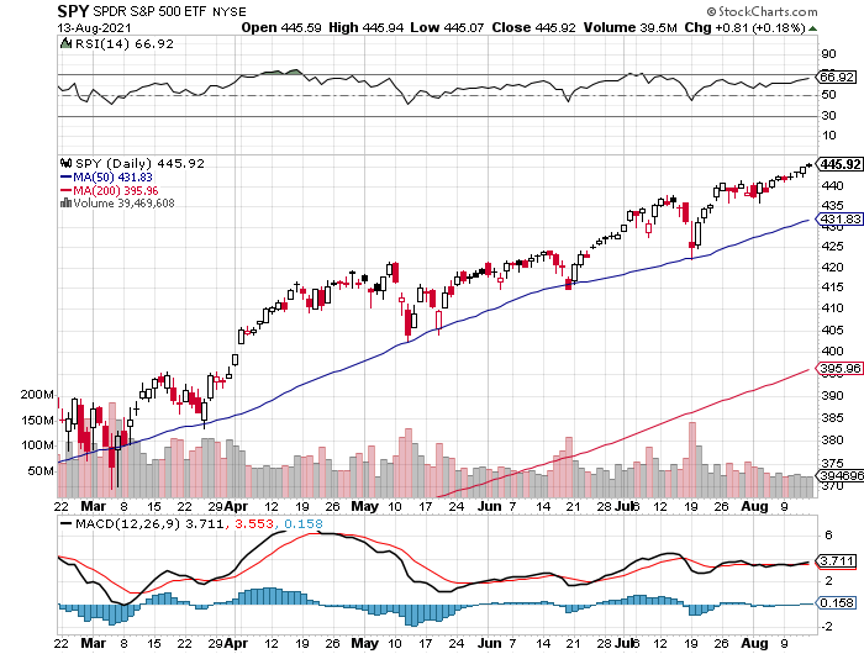
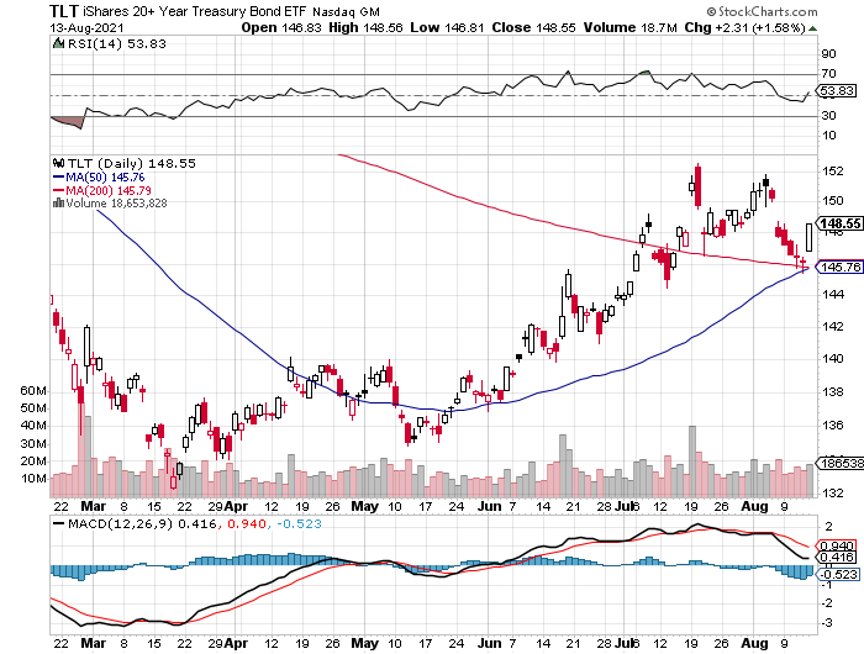
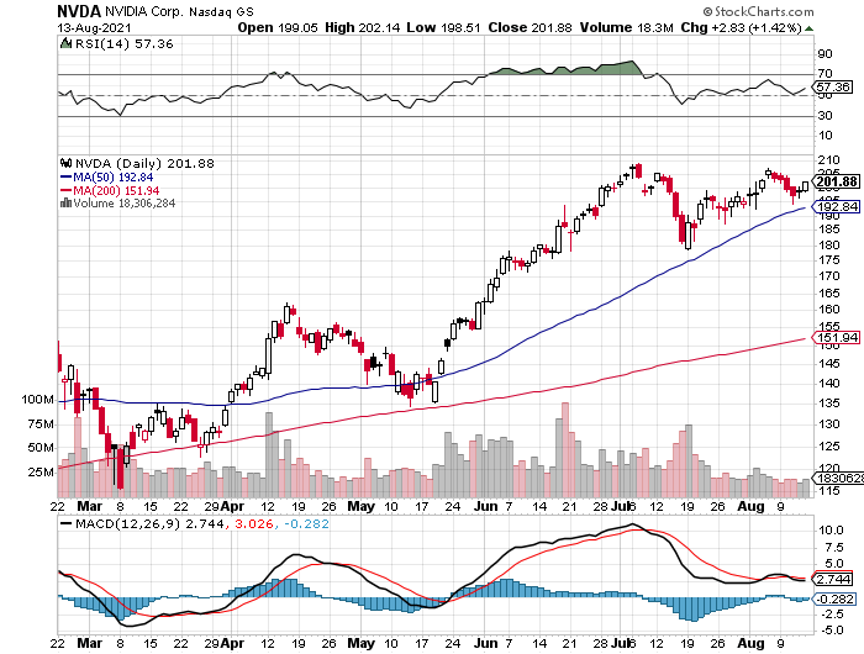
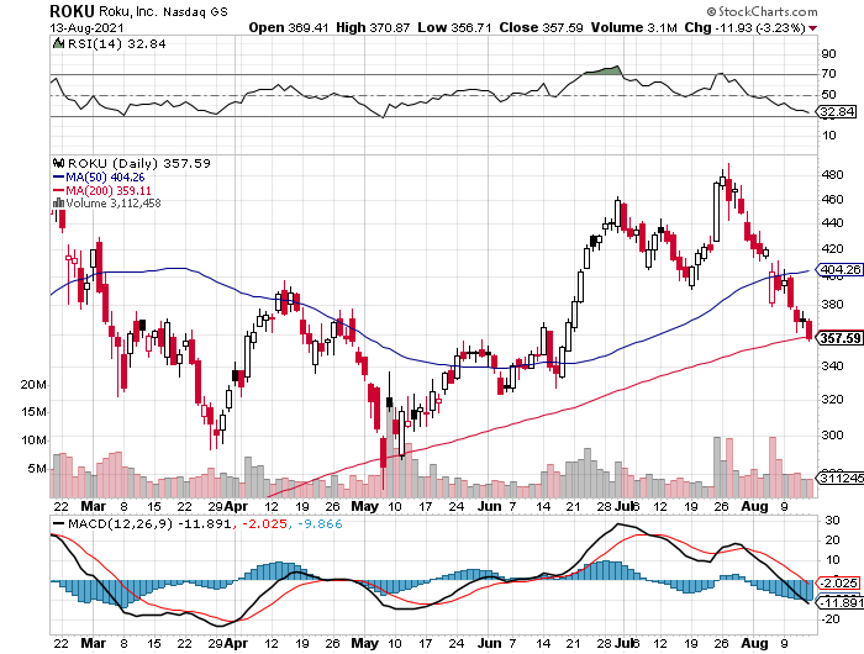
Mad Hedge Technology Letter
August 11, 2021
Fiat Lux
Featured Trade:
(HIGHER HIGHS FOR THE NASDAQ?)
(UBER), (DIDI), (BABA), (COIN), (HOOD), (SFTBY)
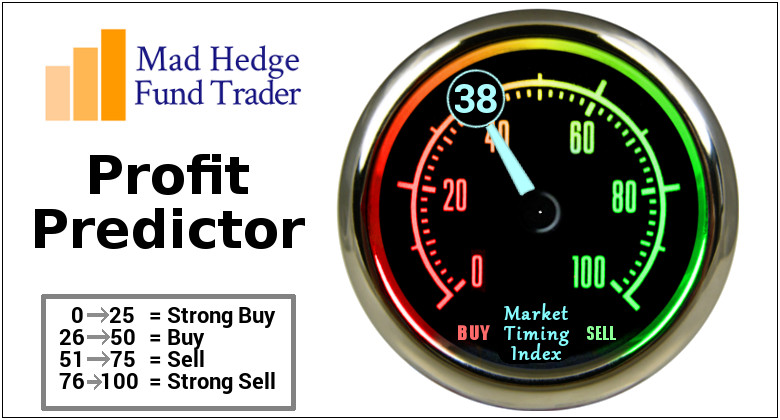
The blowback from the Chinese tech crackdown has been quite tough to take for Softbank (SFTBY) because of the decision to maneuver deeply into Chinese tech shares.
It looked good at the time, as China was the center of every Wall Street analyst’s growth proposition short and long term.
However, troubles in China crystallize the massive shift of deglobalization and many investment funds are finding a new world as we turn the page.
Gone are the days when aggressive investors could just dabble in all sorts of exotic markets believing that globalized forces would be a wind at its back.
So much so that nobody ever batted an eye if you told them you had investment theses playing out in Mongolia or Brazil.
Emerging markets are blowing up and now even the passport with which you do business has never been more prominent.
Rich countries are going the way of Europe – that of intense and mind-numbing regulation to make up for a shortage of tax revenues to pay for these costly programs.
The global canary in the coal mine can be traced back to Alibaba’s founder Jack Ma effectively being muzzled by the Chinese Communist Party. This was the nail in the coffin for the China story as it relates to foreign money waterfalling in the Middle Kingdom.
That’s the end of it.
Softbank will need to go back to the drawing board and probably pluck China off the board as top dog and reset their draft board.
The pain is now being found in Softbank’s balance sheet with net profit down 40%.
Let’s look at some of Softbank’s investments which include Chinese e-commerce giant Alibaba (BABA), car-share giant Didi Global (DIDI), and short-video app TikTok owner ByteDance Ltd.
Around 35%-40% of Softbank’s investments are tied up in China and its net profit is down to 761.5 billion yen, equivalent to $6.9 billion.
The incremental buyer has dried up and Softbank is now saddled with an illiquid Chinese tech portfolio they can’t get rid of.
Softbank founder Mr. Son said that SoftBank’s shares have fallen so low that the price is now only around half of the value of the company’s assets, after subtracting debt. Given that discount, SoftBank will unveil more share buybacks at some point, and is now discussing the timing and size.
He also said that SoftBank will continue the furious pace of investment at Vision Fund 2, which has stakes in 161 companies and has been funding startups at a rate of nearly one per day in recent months.
SoftBank’s new investment in pharmaceutical company Roche Holding AG signals that the Japanese company might resort to safer stocks with stable free cash flow.
Compounding the situation might be that Softbank feels that they have been burnt by tech investment one time too many.
The ripple effect of China tech going down affects their assets as a whole and have concluded that the balance sheet needs trimming and re-upping.
Even if Softbank can find some balance sheet rejuvenation - they no longer feel they can take these extraordinary tech risks that achieve high beta which is required to satisfy investors.
Overall, we could be dealing with a dearth of real, legitimate tech opportunities in proven business models which could be a reason for Softbank rotating into sectors like pharmaceuticals.
No doubt I believe they will keep their eye out for tech opportunities, but they aren’t set on it from the beginning like the past 2 decades.
Or perhaps, this could be the segue into riskier investments than before - remember Uber (UBER) was a company that no VC wanted to touch with a 10-feet pole and Softbank took it on and made a lot of money. but where is the next Uber after Uber?
It's possible that there are no real, transformative companies in the pipeline after the Coinbase (COIN), Robinhood (HOOD) IPOs, these investments usually take 10-20 years to take profits from the initial seed funding.
It could also signal further advancements into the derivatives market with the company looking for leverage bets instead of holding vanilla equities and standard ETF index funds.
Their foray into derivate exposure gave them the nickname the “Nasdaq whale” when the company bought a torrent of call options profiting in the billions from the tech lurch up.
Even retail traders have gotten into options with their profit possibilities which are able to surpass any equity trade that only have a 2:1 leverage ratio.
Softbank could be finding tech too overvalued and looking to jump short-term into another industry almost like a day trader, although tech, for them, is something that is a long-term core objective.
We can analyze this whichever way we want but its meaning is clear – the low hanging tech fruit is gone, and it will be harder to fight for your crust of bread even much so that the Nasdaq whale is looking into morphing into the S&P whale or a different type of whale all together.
I can tell you that deep down in the weeds as a trader, I am seeing a rapidly evolving rotation that has rewarded cyclicals that are back from the dead and financials that are breaking out benefiting from the massive amount of stimulus deposits.
We need to acknowledge that the consumer is currently in the best health of our lifetime because of the free payouts, PPP loan forgiveness, and other goodies. And that doesn’t necessarily mean that tech will go up in the short-term as we skim all-time highs.
Technical charts still look positive for tech, but it is true that the sector has cooled off even if the trend will be higher long-term. It’s getting that much harder to eke out higher highs in the Nasdaq.
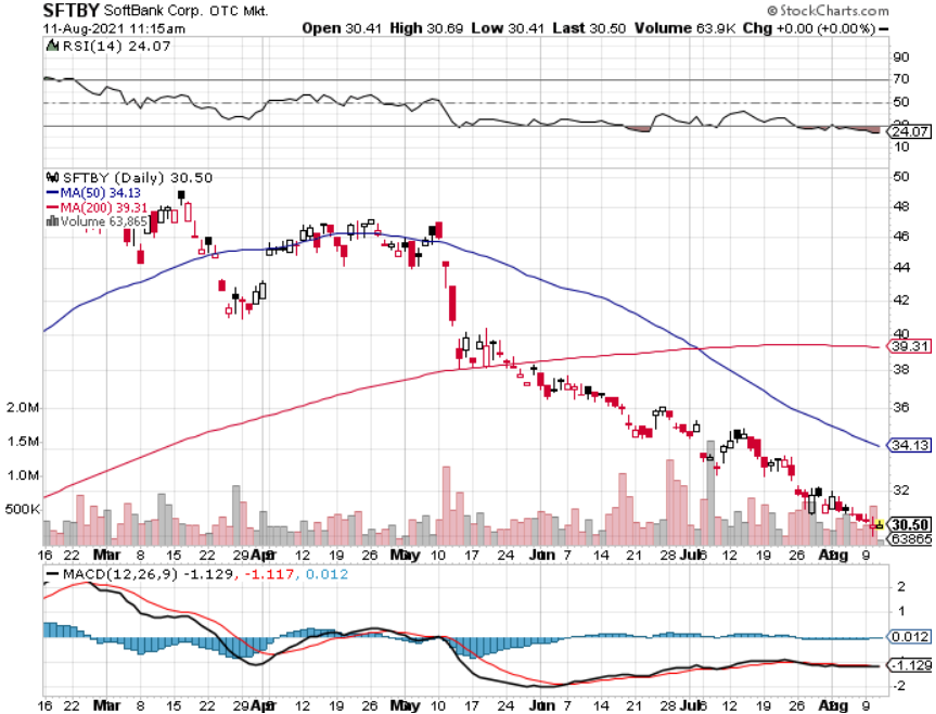
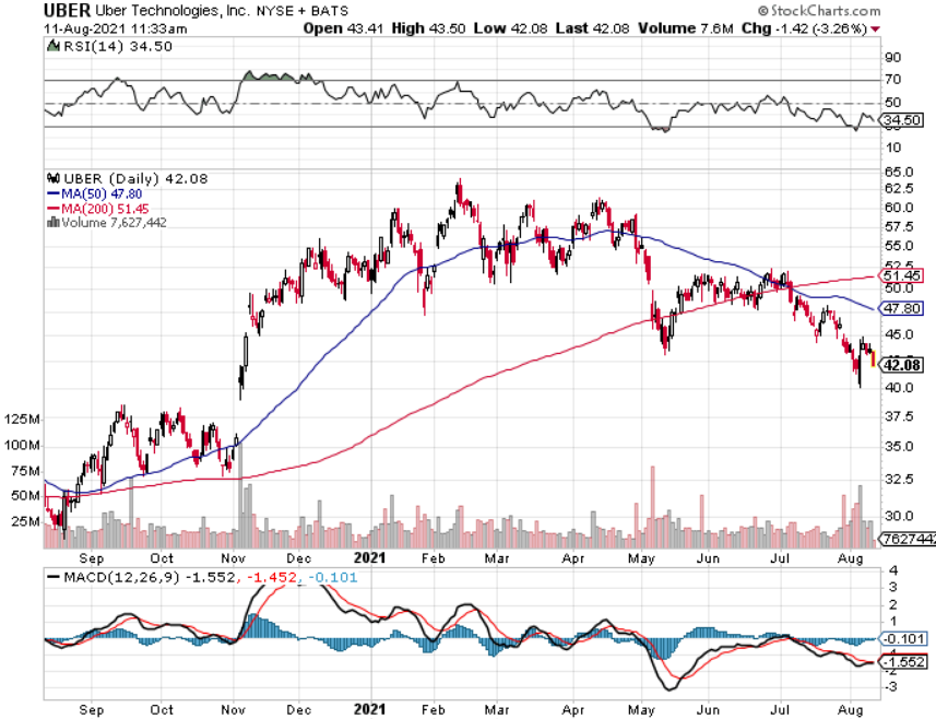
Mad Hedge Technology Letter
July 7, 2021
Fiat Lux
Featured Trade:
(SHOULD YOU BUY THE ROBINHOOD IPO?)
(HOOD), (COIN), (PLTR)
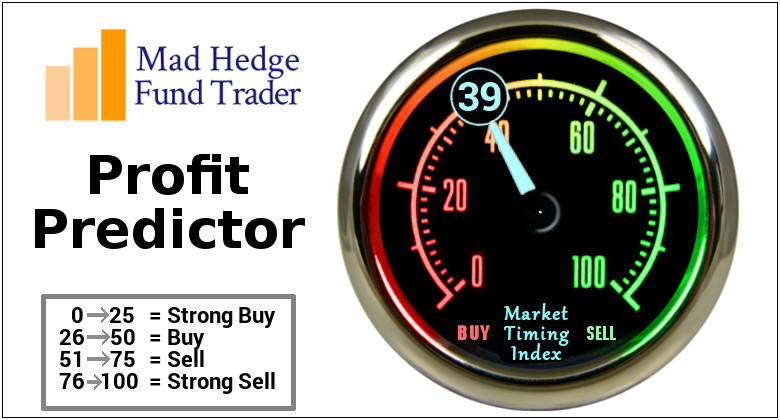
Robinhood (HOOD) is an American financial services company headquartered in Menlo Park, California, known for offering commission-free trades of stocks, exchange-traded, and cryptocurrencies via a mobile app introduced in March 2015.
After perusing their S-1, I can’t help but offer the same recommendation I gave readers for the Coinbase (COIN) listing, which proved to be spot on.
Although this is a real company with real revenues, the growth rates are particularly high because of a one-off phenomenon in alternative asset classes.
I would urge readers to not buy shares of HOOD directly after they are public but instead wait for an entry point sometime after the lock-up period expiration which usually coincides with the insiders and long-time employees unloading shares or a partial trove of them.
The same happened to Palantir (PLTR) which saw a meaningful sell-off upon the lock-up expiration and although PLTR shares are higher today than they were the day of lock-up expiration, it’s better to avoid that dip if you can. PLTR had a big dip when the lock-up expired presenting a great entry point into shares.
Lock-up periods are usually 180 days and I firmly believe this company that will be trading under the ticker symbol HOOD, is not worth paying a premium before that 180-day lock-up period is over.
Don’t be that sucker.
To dovetail with my thesis of not buying HOOD too early is the analysis of their inherent high stakes/ high rewards nature of the business.
Let’s not fudge the details, this is a high-risk business and as of now, they have been handsomely rewarded for it, but that might not always be the case.
They pioneered commission-free trading when the likes of Fidelity and Charles Schwab were still charging $15 to execute one side of a trade.
Why can they offer free trading?
Order history is paid for by third-party high-frequency traders, namely Citadel.
Citadel accounts for 27% of payments for Robinhood retail order flow, and Payment for order flow is 81% of total Robinhood revenue.
The thinking behind buying order flow is to then apply the data through machine learning to even front-run orders of normal retail traders and profit off the spread or micromovements in shares.
They even make markets with their liquidity and trade their own proprietary books.
And yes, this is legal in the United States and companies have gone gangbusters in high-frequency trading (HFT) like Virtu Financial founded by Vincent Viola who owns the NHL franchise Florida Panthers and is big into competing for his horses at the Kentucky Derby.
It obviously pays to do HFT, and if done properly, are great businesses and these are the companies propping up HOOD today.
Robinhood has taken advantage of the Millennial lust to go crypto or go home.
The numbers back me up — $11.6 billion of crypto under custody by the end of Q1.
Bitcoin was the HOOD’s most traded asset in 2020 and the first quarter of 2021 and 17% of total revenue came from crypto in Q1, (compared to 4% in Q420)
In the S-1, it said that HOOD’s business “may be adversely affected, and growth in our net revenue earned from cryptocurrency transactions may slow or decline, if the markets for Dogecoin deteriorate or if the price of Dogecoin declines.”
HOOD and its future success are now uniquely levered towards alternative coin Dogecoin which is now 34% of their total crypto revenue in Q1.
This is the altcoin that Elon Musk joked about, and it explains the 54% growth of 2020 revenue in the first 3 months of 2021.
This is an incredibly high-risk growth strategy that won’t work out every quarter.
HOOD now has 18 million cumulative funded accounts showing the popularity of the business and did $522M in 1Q21 revenue vs. $127.6M in 1Q20 and did $958.8M in revenue in '20 reporting $7.5M in net income.
The median age of customers on HOOD’s platform is 31 and over 50% are first-time investors so if they nurture this customer base, this could be a sticky business moving forward.
If they lead them down this treacherous Dogecoin cliff, it could be trouble and result in terrible quarterly earnings.
A few other risks I felt notable was that Robinhood users went from holding/trading $400M of crypto to $11.5B of crypto from March 2020 to 2021, but HOOD intends to potentially never offer delivery of customer crypto purchases.
This means they are exposed to derivative contracts which just layers on high risk on top of high risk.
Robinhood said there is tremendous regulatory risk for its stock with the company fined $70 million by the securities industry's self-regulator, FINRA, for misleading customers and system outages that the agency said hurt Robinhood's customers.
They said they will likely incur similar fines in the future and investors will need to stomach its predisposition to skirt the law.
There is nothing low-risk about HOOD, and I would wait for a big sell-off after the lock-up expiration to get in at a certain discounted price. Readers shouldn’t blindly pay a premium for HOOD, the risk isn’t worth it.

Legal Disclaimer
There is a very high degree of risk involved in trading. Past results are not indicative of future returns. MadHedgeFundTrader.com and all individuals affiliated with this site assume no responsibilities for your trading and investment results. The indicators, strategies, columns, articles and all other features are for educational purposes only and should not be construed as investment advice. Information for futures trading observations are obtained from sources believed to be reliable, but we do not warrant its completeness or accuracy, or warrant any results from the use of the information. Your use of the trading observations is entirely at your own risk and it is your sole responsibility to evaluate the accuracy, completeness and usefulness of the information. You must assess the risk of any trade with your broker and make your own independent decisions regarding any securities mentioned herein. Affiliates of MadHedgeFundTrader.com may have a position or effect transactions in the securities described herein (or options thereon) and/or otherwise employ trading strategies that may be consistent or inconsistent with the provided strategies.
This site uses cookies. By continuing to browse the site, you are agreeing to our use of cookies.
OKLearn moreWe may request cookies to be set on your device. We use cookies to let us know when you visit our websites, how you interact with us, to enrich your user experience, and to customize your relationship with our website.
Click on the different category headings to find out more. You can also change some of your preferences. Note that blocking some types of cookies may impact your experience on our websites and the services we are able to offer.
These cookies are strictly necessary to provide you with services available through our website and to use some of its features.
Because these cookies are strictly necessary to deliver the website, refuseing them will have impact how our site functions. You always can block or delete cookies by changing your browser settings and force blocking all cookies on this website. But this will always prompt you to accept/refuse cookies when revisiting our site.
We fully respect if you want to refuse cookies but to avoid asking you again and again kindly allow us to store a cookie for that. You are free to opt out any time or opt in for other cookies to get a better experience. If you refuse cookies we will remove all set cookies in our domain.
We provide you with a list of stored cookies on your computer in our domain so you can check what we stored. Due to security reasons we are not able to show or modify cookies from other domains. You can check these in your browser security settings.
These cookies collect information that is used either in aggregate form to help us understand how our website is being used or how effective our marketing campaigns are, or to help us customize our website and application for you in order to enhance your experience.
If you do not want that we track your visist to our site you can disable tracking in your browser here:
We also use different external services like Google Webfonts, Google Maps, and external Video providers. Since these providers may collect personal data like your IP address we allow you to block them here. Please be aware that this might heavily reduce the functionality and appearance of our site. Changes will take effect once you reload the page.
Google Webfont Settings:
Google Map Settings:
Vimeo and Youtube video embeds:
